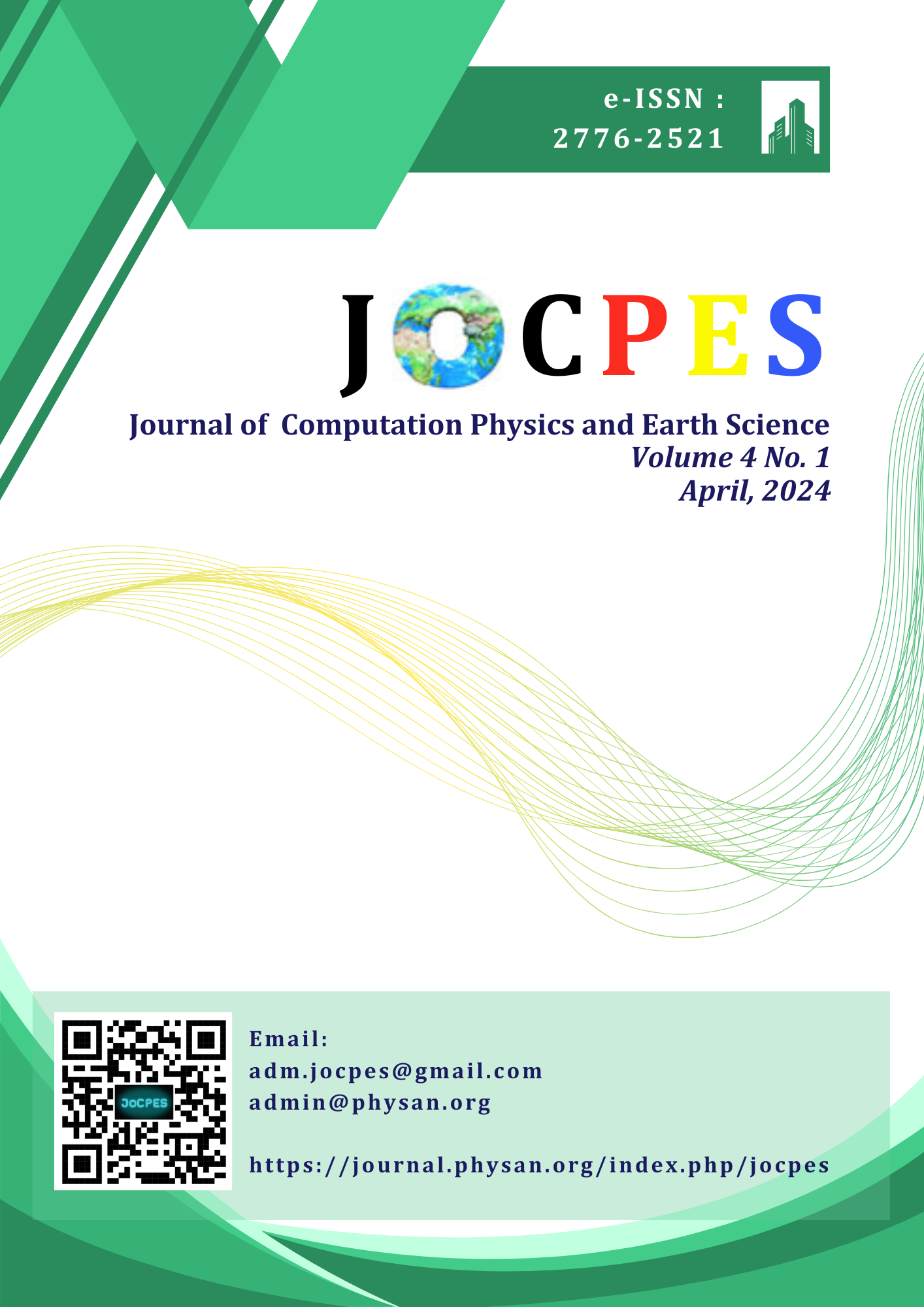Detecting Extreme Weather Patterns Using AI in Bogor Region
Main Article Content
Abstract
Extreme weather events have become more frequent and intense globally, necessitating advanced monitoring and prediction methods. Bogor, Indonesia, known for its complex weather patterns and high rainfall intensity, faces increasing risks of flooding and landslides. This literature review explores the use of Artificial Intelligence (AI) techniques in detecting and predicting extreme weather patterns, with a focus on the Bogor region. Methods such as Convolutional Neural Networks (CNN), Long Short-Term Memory (LSTM), Random Forest (RF), and hybrid AI models are analyzed for their effectiveness. Key challenges, including data quality, model scalability, and computational requirements, are also discussed. The study highlights AI's potential to revolutionize weather monitoring and disaster mitigation efforts, emphasizing the need for robust and interpretable models tailored to local conditions.
Downloads
References
S. Priscillia, C. Schillaci, and A. Lipani, “Flood susceptibility assessment using artificial neural networks in Indonesia,” Artif. Intell. Geosci., vol. 2, no. January, pp. 215–222, 2021, doi: 10.1016/j.aiig.2022.03.002.
F. Simanjuntak, I. Jamaluddin, T. H. Lin, H. A. W. Siahaan, and Y. N. Chen, “Rainfall Forecast Using Machine Learning with High Spatiotemporal Satellite Imagery Every 10 Minutes,” Remote Sens., vol. 14, no. 23, pp. 1–18, 2022, doi: 10.3390/rs14235950.
I. G. Prihanto et al., “A technology acceptance model of satellite-based hydrometeorological hazards early warning system in Indonesia: an-extended technology acceptance model,” Cogent Bus. Manag., vol. 11, no. 1, p., 2024, doi: 10.1080/23311975.2024.2374880.
S. R. Putri and A. W. Wijayanto, “Learning Bayesian Network for Rainfall Prediction Modeling in Urban Area using Remote Sensing Satellite Data (Case Study: Jakarta, Indonesia),” Proc. Int. Conf. Data Sci. Off. Stat., vol. 2021, no. 1, pp. 77–90, 2022, doi: 10.34123/icdsos.v2021i1.37.
R. Meenal, P. A. Michael, D. Pamela, and E. Rajasekaran, “Weather prediction using random forest machine learning model,” Indones. J. Electr. Eng. Comput. Sci., vol. 22, no. 2, pp. 1208–1215, 2021, doi: 10.11591/ijeecs.v22.i2.pp1208-1215.
A. A. Rizqi and D. Kusumaningsih, “Klasifikasi Curah Hujan di Kota Bogor Provinsi Jawa Barat dengan Menggunakan Metode Naive Bayes,” J. Semin. Nas. Mhs. Fak. Teknol. Inf., no. September, pp. 542–550, 2022.
G. Gunawan, W. Andriani, and A. Aimar Akbar, “Application of machine learning for short-term climate prediction in Indonesia,” J. Mantik, vol. 8, no. 1, pp. 828–837, 2024, doi: 10.35335/mantik.v8i1.5215.
B. Bochenek and Z. Ustrnul, “Machine Learning in Weather Prediction and Climate Analyses—Applications and Perspectives,” Atmosphere (Basel)., vol. 13, no. 2, pp. 1–16, 2022, doi: 10.3390/atmos13020180.
Aditya Gumilar, Sri Suryani Prasetiyowati, and Yuliant Sibaroni, “Performance Analysis of Hybrid Machine Learning Methods on Imbalanced Data (Rainfall Classification),” J. RESTI (Rekayasa Sist. dan Teknol. Informasi), vol. 6, no. 3, pp. 481–490, 2022, doi: 10.29207/resti.v6i3.4142.
H. Rofiq, K. C. Pelangi, and Y. Lasena, “Penerapan Data Mining Untuk Menentukan Potensi Hujan Harian Dengan Menggunakan Algoritma Naive Bayes,” J. Manaj. Inform. dan Sist. Inf., vol. 3, no. 1, pp. 8–15, 2020, [Online]. Available: http://mahasiswa.dinus.ac.id/docs/skripsi/jurnal/19417.pdf.
M. Ramdhan, Y. Suharnoto, and H. Susilo Arifin, “Simulation of Environmental Carrying Capacity in Bogor City Which Rely on Rainfall As Water Supply Development of Soil and Water Assessment Tool (SWAT) in Indonesia View project Pusriskel View project,” vol. 10, no. 2, p. 2018, 2018, [Online]. Available: https://www.researchgate.net/publication/326571008.
Bagus Almahenzar and Arie Wahyu Wijayanto, “Analisis Intensitas Hujan Provinsi Jawa Barat Tahun 2020 Menggunakan Association Rule Apriori dan FP-Growth,” J. Syst. Comput. Eng., vol. 3, no. 2, pp. 258–271, 2022.
R. Y. Mardyansyah, B. Kurniawan, S. Soekirno, D. E. Nuryanto, and H. Satria, “Artificial Intelligence For Rainfall Estimation In Tropical Region: A Survey,” IOP Conf. Ser. Earth Environ. Sci., vol. 1105, no. 1, 2022, doi: 10.1088/1755-1315/1105/1/012024.
N. A. Putri and A. Wibowo, “Rainfall Maps for the Suitability of Settlement Area in Bogor Raya,” EnviroScienteae, vol. 19, no. 2, p. 123, 2023, doi: 10.20527/es.v19i2.15116.
M. Ramdhan, Y. Suharnoto, and H. Susilo Arifin, “Simulation of Environmental Carrying Capacity in Bogor City Which Rely on Rainfall As Water Supply Development of Soil and Water Assessment Tool (SWAT) in Indonesia View project Pusriskel View project,” no. July, 2018, doi: 10.5281/zenodo.1321332.
O. Bianchi and H. P. Putro, “Artificial Intelligence in Environmental Monitoring: Predicting and Managing Climate Change Impacts,” vol. 3, no. 1, pp. 85–96, 2024.
A. R. Herdiansyah et al., “Multi-temporal analysis of landslide susceptibility in the Greater Bogor Area and its relation to land use change and rainfall variation,” IOP Conf. Ser. Earth Environ. Sci., vol. 1313, no. 1, 2024, doi: 10.1088/1755-1315/1313/1/012025.
E. Khyber, L. Syaufina, and A. Sunkar, “Variability and time series trend analysis of rainfall and temperature in Dramaga Sub-District, Bogor, Indonesia,” IOP Conf. Ser. Earth Environ. Sci., vol. 771, no. 1, 2021, doi: 10.1088/1755-1315/771/1/012016.
A. Suheri, C. Kusmana, M. Y. J. Purwanto, and Y. Setiawan, “The peak runoff model based on Existing Land Use and Masterplan in Sentul City area, Bogor,” IOP Conf. Ser. Earth Environ. Sci., vol. 399, no. 1, 2019, doi: 10.1088/1755-1315/399/1/012039.
M. Putra, M. S. Rosid, and D. Handoko, “High-Resolution Rainfall Estimation Using Ensemble Learning Techniques and Multisensor Data Integration,” Sensors, vol. 24, no. 15, 2024, doi: 10.3390/s24155030.
R. Dewi, Prawito, and H. Harsa, “Fog prediction using artificial intelligence: A case study in Wamena Airport,” J. Phys. Conf. Ser., vol. 1528, no. 1, 2020, doi: 10.1088/1742-6596/1528/1/012021.
N. Liundi, A. W. Darma, R. Gunarso, and H. L. H. S. Warnars, “Improving Rice Productivity in Indonesia with Artificial Intelligence,” 2019 7th Int. Conf. Cyber IT Serv. Manag. CITSM 2019, no. August, 2019, doi: 10.1109/CITSM47753.2019.8965385.

